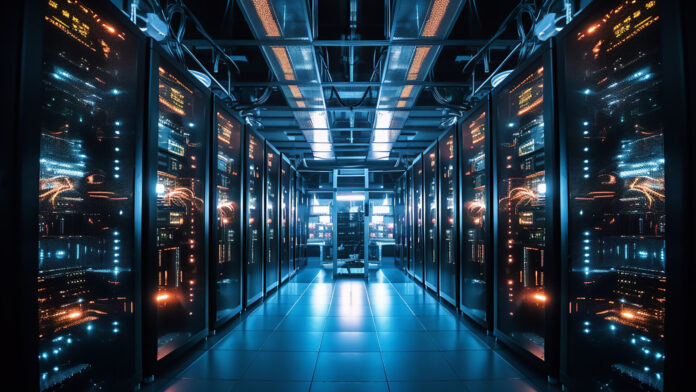The market for physical data centre infrastructure will grow at a compound annual rate (CAGR) of 15 percent from 2024 to 2029, reaching $63.1 billion by the end of the period. Analyst house Dell’Oro Group puts the growth down to (you guessed it) the mad rush for AI of various kinds. “AI-ready capacity [will] accelerate through the mid-decade,” it says. “This outlook reflects stronger-than-expected deployments to support accelerated computing workloads.”
Dell’Oro Group categorises the various foundational hardware componentry for computing, networking, and storage resources in the planet’s data centres as Data Centre Physical Infrastructure (DCPI). It has a new report with all the data. It says thermal management and cabinet power distribution unit (PDU) solutions, as sub-segments, will lead the surge. The former, covering solutions to keep servers from overheating, will see a CAGR of 19 percent.
Specifically, direct liquid cooling (DLC) solutions – where liquid (usually water or a special coolant; more efficient than air cooling) carries heat away from CPUs and GPUs, and other componentry – will jump from $1.1 billion to $5.8 billion, it forecasts. As AI and high-performance computing push rack densities higher, traditional fans and air conditioning will not cut it – and DLC will become the dominant tech to dissipate heat out of the rack
Meanwhile, cabinet PDU solutions and busway systems – respectively managing power distribution inside server racks and in overhead rigs inside the AI halls that house them – will expand at a CAGR of 21 percent, it suggests. Meanwhile, revenue from the sale of busbars (mostly enclosed within busway systems) to data centres will grow at a CAGR of 25 percent, it says. “Busbars are now the de facto choice for AI halls,” it writes.
By contrast, remote power panels (RPPs) – an older style of distributing power; less efficient and less flexible will see compound growth of five percent in the period; so much lower.
Separately, data centre placements with service providers will tend towards central cloud venues (as offered by the likes of AWS, Azure, Google Cloud) and co-location sites renting capacity (Equinix, Digital Realty, for example). Combined, these service providers will see a CAGR of 20 percent, reflecting that most enterprises will opt for their easy scale and efficiency to host their AI workloads.
Besides, the enterprise segment – comprising companies running their own on-premise data centres – will increase sales revenues by six percent per annum, on average. “Enterprise leaders favour colocation partners to host AI infrastructure,” writes Dell’Oro Group, rather than building or expanding their own AI infrastructure sites.
North America leads, likely because of hyperscaler dominance and early AI investments. Europe, the Middle East, and Africa (EMEA) and China will see strong growth to 2026, and then a slow-down as supply catches up with demand. Requirements for ‘AI sovereignty’, to keep infrastructure and data within national borders, and export-policy shifts, around government restrictions on AI chip exports, are driving local (cloud) data centre investments.
Dell’Oro Group highlights other trends: data centre owners (‘operators’) face continuing challenges to secure enough power from utilities to support their AI halls, and are responding by combining utility ties with on-site generation and (solar, batteries, generators) and “other tactics”. But while power availability is a concern, it will not significantly slow the AI infrastructure boom. It writes: “We expect only a modest impact on capacity expansion from power constraints.”
Alex Cordovil, research director at Dell’Oro Group, said: “AI is reshaping facility design from the rack up – densities are climbing, power is getting smarter, and liquid is moving from niche to necessary. Our latest forecast shows the market scaling faster and more broadly than earlier expected, with vendors and operators adapting quickly to new thermal and electrical realities while navigating power constraints pragmatically.”

